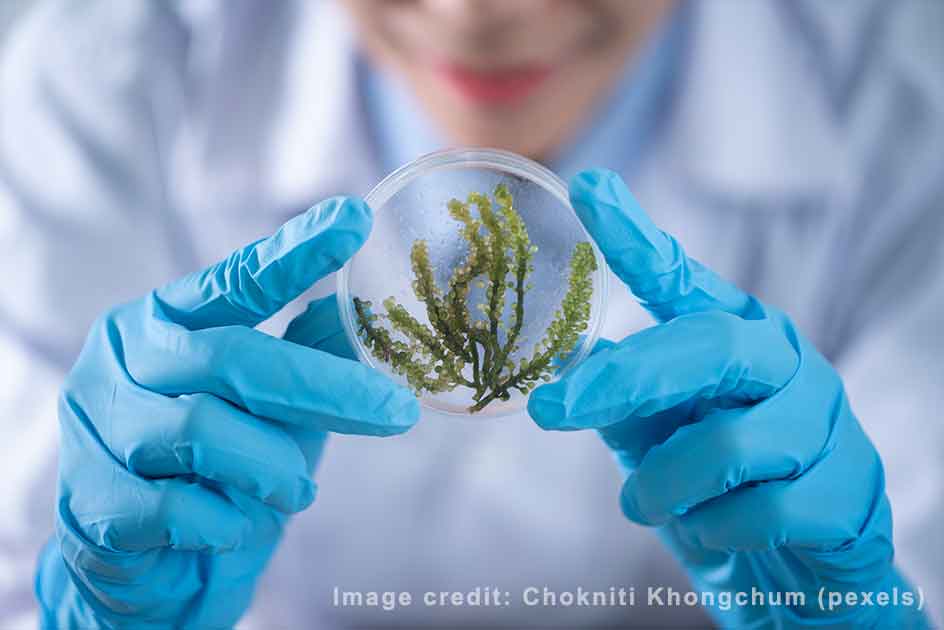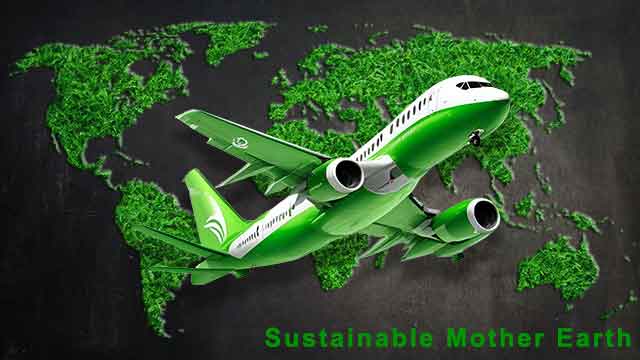The COVID-19 pandemic has caused a global upheaval, affecting every aspect of society, including sustainability efforts. As countries grappled with the immediate health and economic crisis, the focus on sustainability temporarily shifted. However, the pandemic also brought to light the interconnectedness of human and planetary health.
Disruptions in Sustainability Initiatives due to COVID 19 pandemic:
The pandemic disrupted ongoing sustainability initiatives across various sectors. Lockdowns and travel restrictions hindered environmental conservation efforts, such as field research and conservation programs. Sustainability-focused events and conferences were canceled or shifted to virtual platforms, impacting knowledge sharing and collaboration. Additionally, financial constraints and shifting priorities led to reduced funding for sustainability projects. Here are some key ways in which the pandemic disrupted sustainability efforts:
Restricted Field Research and Conservation Programs:

Lockdowns, travel restrictions, and social distancing measures made it challenging to conduct field research and conservation programs. Scientists and researchers faced difficulties accessing natural environments, studying wildlife, and collecting crucial data for conservation efforts.
Canceled or Virtual Sustainability Events:
Many sustainability-focused conferences, workshops, and events were either canceled or shifted to virtual platforms. This disrupted the opportunity for knowledge sharing, networking, and collaboration among experts, researchers, and practitioners in the sustainability field.
Financial Constraints and Shifting Priorities:
The economic downturn caused by the pandemic led to financial constraints for governments, organizations, and businesses. As resources became limited, funding for sustainability projects and initiatives faced cutbacks or redirection to more immediate COVID-19 response efforts.
Delayed Policy and Legislative Actions:
The focus of governments and policymakers shifted towards addressing the health and economic impacts of the pandemic. This led to delays in implementing or advancing sustainability-related policies, legislation, and regulations. Priority was given to immediate crisis management rather than long-term sustainability measures.
Disrupted Supply Chains:
The pandemic exposed vulnerabilities in global supply chains, impacting sustainable sourcing and production practices. Disruptions in the availability and transportation of raw materials and components affected the ability of businesses to maintain sustainable supply chains and meet sustainability goals.
Decline in Renewable Energy Investments:
The economic uncertainty caused by the pandemic led to a decline in investments in renewable energy projects. Businesses and governments were forced to divert funds towards immediate needs, leading to a slowdown in the transition to clean energy and renewable infrastructure.
Reduced Environmental Monitoring and Compliance:
Due to lockdown measures and restricted movements, environmental monitoring and compliance efforts faced challenges. This resulted in reduced monitoring of air and water quality, enforcement of environmental regulations, and oversight of sustainability practices in industries.
Impact on Sustainable Tourism:
The travel restrictions and fear of transmission significantly impacted the tourism industry. Sustainable tourism initiatives, such as eco-tourism, community-based tourism, and wildlife conservation projects, suffered due to reduced visitor numbers and revenue loss.
Impact of COVID 19 on Climate Change Efforts
The COVID-19 pandemic had both short-term and long-term impacts on climate change efforts. While there were temporary reductions in greenhouse gas (GHG) emissions, the overall effect on climate change mitigation was complex and multifaceted. Here’s a detailed explanation of the impact of the pandemic on climate change efforts:
Short-Term Reductions in GHG Emissions:
The pandemic led to widespread lockdowns, travel restrictions, and reduced economic activity, resulting in short-term reductions in GHG emissions. With fewer cars on the road, reduced air travel, and industrial slowdowns, there was a decrease in carbon dioxide (CO2) emissions. Satellite data and air quality measurements showed improved air quality in many urban areas.
Disruption of Renewable Energy Transition:

The pandemic’s economic impacts disrupted the transition to renewable energy sources. Falling energy demand and reduced investments affected renewable energy projects. Delayed construction, supply chain disruptions, and financial uncertainties slowed down the installation of renewable energy infrastructure, such as solar and wind farms.
Diverted Attention and Resources:
Governments and policymakers shifted their attention and resources towards addressing the immediate health and economic crises caused by the pandemic. Climate change mitigation efforts were temporarily deprioritized, as funds and attention were redirected to healthcare systems, economic stimulus packages, and job retention.
Economic Recovery and Carbon Intensive Sectors:
As countries sought to revive their economies, some recovery measures focused on carbon-intensive sectors, such as fossil fuel-based industries. Investments in fossil fuel infrastructure, including coal-fired power plants and oil exploration, were made to stimulate economic growth, potentially delaying the energy transition and increasing carbon emissions.
Postponement of Climate Change Conferences:
Important climate change conferences, such as the United Nations Climate Change Conference (COP26), were postponed due to the pandemic. These conferences serve as crucial platforms for international negotiations, collaboration, and setting climate change goals. The delay disrupted global climate change policy-making and hindered progress in international climate action.
Increased Plastic Waste and Single-Use Items:
The pandemic led to increased consumption of single-use items, such as personal protective equipment (PPE), disposable masks, and packaging. This resulted in a surge in plastic waste, potentially reversing progress made in reducing plastic pollution and undermining efforts to promote a circular economy.
Public Perception and Priorities:
The pandemic altered public perception and priorities. As people focused on immediate health concerns and economic uncertainties, climate change may have taken a backseat in public discourse. Climate change messaging and awareness campaigns faced challenges in gaining prominence and capturing public attention during the pandemic.
Resilience and Adaptation:
The pandemic underscored the importance of resilience in the face of crises. This recognition may lead to increased focus on climate change adaptation and resilience-building measures in the future. Efforts to strengthen infrastructure, promote sustainable agriculture, and enhance disaster preparedness may gain traction as societies recognize the need for resilience.
Opportunities presented by COVID 19 for Sustainable Practices
The COVID-19 pandemic presented several opportunities for the promotion and acceleration of sustainable practices. While the crisis caused significant disruptions, it also highlighted the interconnectedness between human health, environmental well-being, and social resilience. Here’s a detailed explanation of how the pandemic brought opportunities for sustainable practices:
Remote Work and Virtual Collaboration:
The shift to remote work and virtual meetings during the pandemic reduced commuting and travel, leading to decreased carbon emissions and traffic congestion. This experience demonstrated the feasibility and effectiveness of remote work, paving the way for long-term adoption and reducing the environmental impact associated with daily commutes.
Localization and Resilient Supply Chains:
The disruptions in global supply chains highlighted the vulnerabilities and risks associated with long-distance transportation and dependence on a few regions for essential goods. This experience emphasized the need for localized sourcing, diversified supply chains, and regional production networks, which can enhance resilience, reduce carbon emissions, and support local economies.
Sustainable Sanitation and Hygiene Practices:
The emphasis on hygiene during the pandemic brought attention to sustainable sanitation practices. Water conservation, wastewater management, and promoting hygiene practices with minimal environmental impact gained significance. Advancements in water-efficient technologies, circular sanitation systems, and eco-friendly disinfectants emerged as sustainable alternatives.
Reevaluation of Consumer Behavior:
The pandemic forced individuals to reassess their consumption patterns and lifestyles. Lockdowns and limited access to non-essential goods prompted a reduction in consumerism. This provided an opportunity to foster more sustainable consumer behaviors, such as buying locally, supporting small businesses, reducing waste, and choosing sustainable products with a lower environmental footprint.
Sustainable Travel and Tourism:

Travel restrictions and reduced tourism highlighted the negative impacts of mass tourism on the environment and local communities. The crisis created an opportunity to rethink tourism models, promote responsible travel, and develop sustainable tourism practices. Concepts like ecotourism, community-based tourism, and regenerative tourism gained traction, encouraging a more sustainable and respectful approach to travel.
Increased Awareness of Environmental Linkages:
The pandemic underscored the interconnections between human health and the natural environment. This heightened awareness created opportunities to strengthen the understanding of the ecological impacts of human activities, fostering a greater commitment to sustainability and environmental conservation.
Green Recovery Investments:
Many governments recognized the need to rebuild economies in a sustainable and climate-resilient manner. Economic recovery plans were developed with a focus on green investments, such as renewable energy projects, energy-efficient infrastructure, and sustainable transportation systems. These investments not only stimulate economic growth but also contribute to long-term sustainability goals.
Digital Transformation and Sustainable Technologies:
The reliance on digital platforms during the pandemic highlighted the importance of digital transformation and sustainable technologies. Advancements in clean energy technologies, smart cities, and digital solutions for energy management and resource optimization gained momentum. This digital transformation can enable more sustainable and efficient systems across various sectors.
Education and Awareness:
The pandemic increased public interest in health and science-related issues. This created an opportunity to incorporate sustainability education and awareness into public discourse. It highlighted the need for interdisciplinary knowledge and understanding of sustainability challenges, encouraging educational institutions to integrate sustainability principles into their curricula.
Social Equity and Well-being:
The pandemic exposed inequalities in society, emphasizing the importance of social equity in sustainable development. It created an opportunity to address social disparities, promote inclusive growth, and ensure access to healthcare, education, and clean energy for all. Sustainability initiatives can be designed to enhance social well-being, reduce inequalities, and create more resilient and inclusive communities.
FAQs:
-
How did the COVID-19 pandemic create opportunities for sustainable practices?
The pandemic led to remote work, fostering reduced commuting and carbon emissions, highlighted the need for resilient supply chains and localized sourcing, and promoted sustainable sanitation practices.
-
Did the pandemic impact consumer behavior towards sustainability?
Yes, the pandemic prompted a reevaluation of consumption patterns, encouraging sustainable consumer behaviors such as buying locally, supporting small businesses, and reducing waste.
-
Did the pandemic affect the tourism industry from a sustainability perspective?
Yes, travel restrictions led to a rethinking of tourism models, promoting responsible travel and the development of sustainable tourism practices like ecotourism and community-based tourism.
-
Did the pandemic provide opportunities for investment in sustainable initiatives?
Absolutely, many governments recognized the need for green recovery investments, prioritizing renewable energy projects, energy-efficient infrastructure, and sustainable transportation systems.
-
How did the pandemic influence the perception of the environment’s impact on human health?
The pandemic increased awareness of the interconnections between human health and the environment, fostering a greater commitment to sustainability and environmental conservation.
-
Did the pandemic affect education and awareness about sustainability?
Yes, the pandemic created an opportunity to incorporate sustainability education and awareness into public discourse, emphasizing the need for interdisciplinary knowledge and understanding of sustainability challenges.
